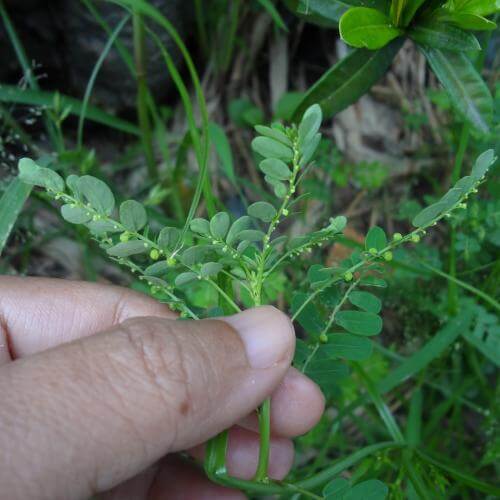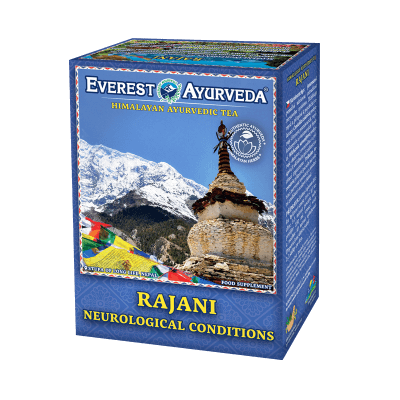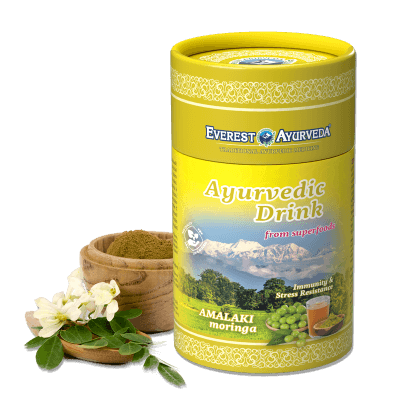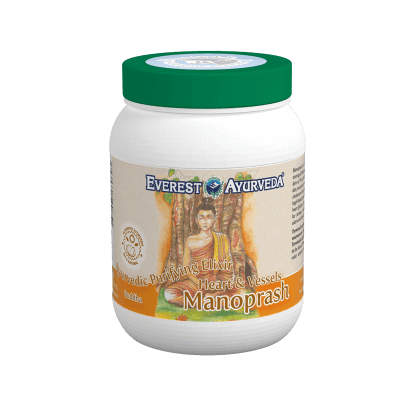
The plant kingdom is connected to the human nervous system through our sensory perception and mental consciousness. That is why Ayurveda distinguishes the properties of herbs according to six basic tastes, which include: sweet, sour, salty, pungent, bitter, and astringent.
Each flavor is always associated with a certain type of effect and directly influences our nervous system, vital energy, and digestive process. Therefore, the flavor of Ayurvedic herbal decoctions is always therapeutic and is part of their health benefits for the human body.
 The healing potency of Ayurvedic herbs
The healing potency of Ayurvedic herbs
In addition to the six tastes, all plants also contain a special healing potency (prabhava), which includes a type of psychological and spiritual effect on deeper levels of human consciousness. Ayurvedic herbs therefore do not transfer their healing power solely on the basis of their health-promoting extracts, but also in the form of spiritual consciousness and light, or the cosmic quality of sattva. Based on the well-known process of photosynthesis, the chloroplasts of green plants use water and carbon dioxide to convert the energy of light radiation into oxygen and glucose, which are absolutely essential for human life.
Ayurvedic herbs according to dosha
The principle of the three doshas can also be found in every plant, as it is in all creatures in nature, including humans. Kapha plants are lush with lots of leaves and sap. They are firm, well-grown, and juicy with a high water content. The kapha principle is most prevalent in the roots and bark of trees. Vata plants have relatively few leaves, rough and cracked bark, twisted and gnarled branches, and an elongated growth with low sap content. The vata principle is most prevalent in the leaves and fruits. Pitta plants are of medium height and contain sap with a warming effect. They can be recognized by their bright and vibrant colors. The flower is the main seat of the pitta principle.
 The effects of various parts of Ayurvedic herbs on human tissues
The effects of various parts of Ayurvedic herbs on human tissues
Nepalese collectors must also be able to distinguish between the different parts of plants, which are used differently due to their varying effects and which Ayurveda divides into five parts corresponding to the five elements of nature:
- The root represents the element of earth.
- The stem and branches represent the element of water.
- The flower represents the element of fire.
- The leaves represent the element of air.
- Fruit represents the element of ether.
- The seed contains all five elements at once, because it holds the potential of the entire plant within itself.

In Ayurvedic medicine, plants are further divided into seven categories according to the types of tissue on which they are effective. Therefore, individual parts of plants can be assigned to corresponding tissues of the human body (dhātus). The juice from the leaves corresponds to blood plasma (rasa), sap represents blood (rakta), soft wood corresponds to muscles (mamsa), resin is fatty tissue (meda), bark acts on bones and joints (asthi), the leaves are related to nerve tissue (majja), and finally, the flowers or fruits are linked to the activity of the male and female reproductive organs (shukra/arthava).
How many ways are Ayurvedic herbs used?
Ayurvedic herbs are generally prepared and used in eight different ways:
- Herbal decoctions (kvatha) are the most commonly used and very effective method of preparing medicinal plants. They require boiling the herbs in hot water over a steady flame for at least several minutes.
- Hot infusions (phanta) involve pouring boiling water over a mixture of herbs and allowing it to steep in a hot bath for a sufficiently long time.
- Cold infusions (hima) are only suitable for light and aromatic herbs with a refreshing or cooling effect.
- Freshly squeezed juices (svarasa) are prepared only from a narrow selection of plant parts, berries, fruits, and vegetables.
- Dried herbs ground into powder (churna) are taken with milk, water, or honey.
- Elixirs or pastes (avaleha) are tonic herbal jams containing amalaki fruit, clarified butter, and honey. They are primarily intended for nourishment and regeneration of body tissues and overall strengthening of the body.
- Syrups (asava & aristha) are fermented herbal tinctures widely used to promote good digestion and metabolism.
- Ointments (kalka) are crushed parts of herbs mixed with water, honey, clarified butter, or oil. They are mainly used externally in the form of healing wraps, compresses, and in the treatment of skin injuries.
 The physical body is composed of thousands of subtle channels and nerves that ensure healthy metabolism in human tissues. Any disease is always associated with impaired function of one of the sixteen basic channels (srotas). Each herb is distinguished by its strength of action on the system of these subtle nerve channels and its ability to restore the proper flow of energy in them.
The physical body is composed of thousands of subtle channels and nerves that ensure healthy metabolism in human tissues. Any disease is always associated with impaired function of one of the sixteen basic channels (srotas). Each herb is distinguished by its strength of action on the system of these subtle nerve channels and its ability to restore the proper flow of energy in them.

 100 g
100 g  100 g
100 g  100 g
100 g  200 g
200 g